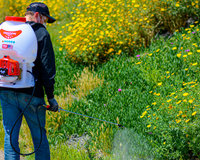If you’re a pet owner, you’ve likely had to deal with ticks at some point—and if you’ve found one on your dog, you might be wondering: are dog ticks dangerous to humans? The short answer is yes. While ticks are often seen as a pet health issue, they can pose a serious risk to people as well.
Here’s what you need to know about the dangers of dog ticks, how they affect humans, and what you can do to protect both your pet and your family.
How Dog Ticks Affect Humans
Dog ticks—especially species like the American dog tick (Dermacentor variabilis) and brown dog tick (Rhipicephalus sanguineus)—can and do bite humans. They’re known carriers of several diseases that can be transmitted through a single bite. These include:
-
Rocky Mountain spotted fever
-
Tularemia
-
Tick paralysis
-
Ehrlichiosis (in rare cases)
While not all dog ticks carry pathogens, the ones that do can cause severe illness. And since they’re small and stealthy, they may latch on without you even noticing until symptoms begin.
How Do Ticks Move from Dogs to People?
Ticks don’t jump or fly—but they are excellent climbers and lurkers. Once a tick is on your dog, it can easily be transferred to your bedding, furniture, or clothes. From there, it’s a short trip to your skin. In fact, dog ticks can survive in indoor environments for months if not properly addressed.
That’s why simply treating your pet is not enough. You must also treat your home and surroundings to prevent recurring infestations and reduce health risks.
Symptoms of a Tick Bite in Humans
If you’ve been bitten by a dog tick, you may experience:
-
A red bump or rash at the bite site
-
Fever or chills
-
Muscle aches
-
Fatigue or headache
-
A spreading rash (particularly with Rocky Mountain spotted fever)
Seek medical attention if any of these symptoms develop—especially if you know you’ve been exposed to a tick recently.
Protecting Your Pet, Home, and Family
The best way to reduce your risk is through prevention and environmental control:
-
Keep your dog on a year-round tick preventative, such as a vet-recommended topical or oral medication.
-
Inspect your dog regularly, especially after outdoor walks or hikes.
-
Wash pet bedding and vacuum your home frequently.
-
Treat your yard, especially shaded, grassy, or wooded areas.
To fully treat indoor and outdoor spaces, consider using a fogger, which disperses fine insecticide mist into hidden crevices where ticks and their eggs may be hiding. It’s a powerful, efficient way to protect your home from pests that might go unnoticed until it’s too late.
So, are dog ticks dangerous to humans? Yes—potentially very. They may seem small, but the risks they pose are anything but. Don’t let your guard down. With the right preventative measures and environmental control, you can protect both your pets and your loved ones from tick-related dangers.









